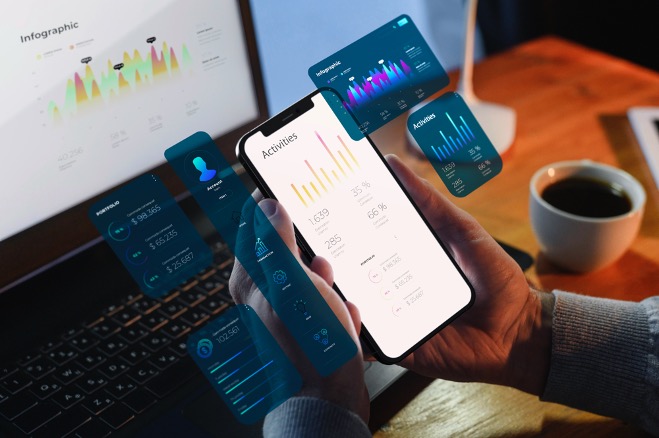Content marketing is an integral part of SEO and should be a top priority for any business owner or entrepreneur. Sadly, many B2B organizations fail to set up a well-defined content marketing plan before starting up with their operations and this hurts their marketing journey more than they think.
A B2B Content Marketing report conducted in North America revealed that more than more than 61% of the successful content marketers had a documented B2B content marketing strategy, while only 13% of the unsuccessful had a plan in place. This brings us to a question – what are the successful B2B content marketers doing to make their marketing plans more effective?
8 Steps to an Effective B2B Content Marketing Plan
1. Identifying the purpose, priorities, and organizational goals
Identifying what you want to achieve with the help of your content marketing strategy is a vital point to start with. Are you doing this in order to attain more leads or increase engagements, or enhancing brand awareness is the ultimate goal? Also, prioritizing an aspect in your content should be done beforehand to get the maximum out of it. Whether you want to create more engaging content, or tell a story via your content, or if you want to prioritize something else, should be documented well before starting the campaigns.
2. Conducting a persona research
Knowing what your audience would like to read and how you can add value to their knowledge by your content is a really necessary. A target audience has to be clearly defined and in order to understand what your target audience would like to read, there is a need to conduct a thorough persona research so as to provide relevant content to them and drive engagements.
3. Researching on the latest trends and brainstorming content ideas
Trends in the digital marketing industry keep changing with time and the need of the hour is to stay abreast of the updates. There was a time when you could rank your website up high in Google search results by stuffing in keywords relevant to your industry, but times changed, algorithms changed, and you would be penalized if you tried to do so in the recent times. Similarly, text content was the most valuable content on the web a decade ago, but now, info graphics and video content are the most sought-after. The idea is to follow the latest trends and brainstorm to come up with content ideas that could help gain you visitors for your sites that would be relevant enough to get converted into customers afterwards.
4. Deciding on the types of content
The next step is deciding on what kinds of content would your audience like to see. If your target audience comprises of professionals on LinkedIn, in-detail research reports and whitepapers would work best. If your products/services cater to a group of audience that are mostly present on Facebook or Quora, blogs, explainer videos, and infographics would serve the best. Persona research would enable you to know what forms of content your audience likes and so, you won’t need to waste efforts in producing the wrong form of content.
5. Being unique in approach
If you are in a certain business, there must be something unique that separates you from your competitors. That is the best point to hit on! Try to find out what your company is the best at, or what you are best at, as an entrepreneur, and produce unique content that only you could think of. You can use humor while your competitors are engaging via serious content, or you can provide explainer videos in the fields untouched by your competitors. In the end, uniqueness will only help you stand out amongst a crowd of B2B content marketers, giving an edge to your content marketing plans.
6. Content optimization, distribution, and promotion
Now that you have created quality content, how would you go forward optimizing it for the search engines? Which would be the best mediums/platforms/channels to distribute the content? How would you promote your content over the web? Crafting a content marketing plan will make sure you understand which channels to employ, which social media platforms to use, and where to promote your content so as to get the maximum benefit out of it. A video, for instance, can be posted and promoted via YouTube, while short messages can be communicated via Twitter. A long blog article can be shared on article submission sites, while a well-researched whitepaper can be shown the way to the LinkedIn audience. The plan is to share pieces of content in a way that they get maximum exposure to relevant audience, thus increasing its own value and that of your overall content marketing strategy. Keeping track of the best time to post is also crucial and it greatly increases the effectiveness of your content.
According to a survey, B2B organizations use LinkedIn the most for content distribution:

7. Allocating Budget
Every marketing strategy needs a definite budget to avoid inconsistencies and to maintain a regular flow of campaign. 66% of the B2B content marketers use Search Engine Marketing (SEM) in order to promote their content. Other channels include print or offline media, social ads, traditional banners, etc.

8. Tracking results/metrics
Coming to the main part, how do you track the results of your B2B content marketing endeavors? Google analytics, in addition to various other tools, is a great medium to keep track of the performance of your B2B content marketing plan. Some KPI that can offer insights and future course of action for your organization include website traffic, search engine rankings, growth in the number of subscribers, CTR, social media followers, Leads, etc. The key metrics should be monitored from time to time and campaign edited as per requirements for the content marketing plan to produce the best results.



















Connect with us